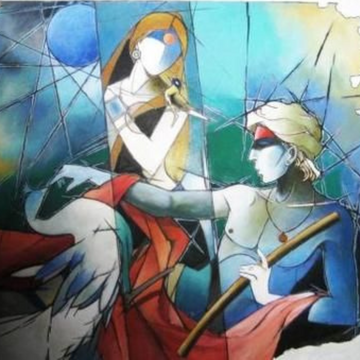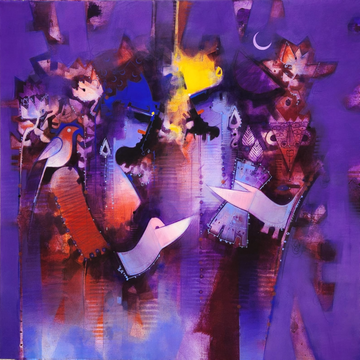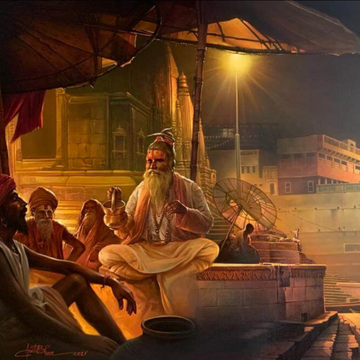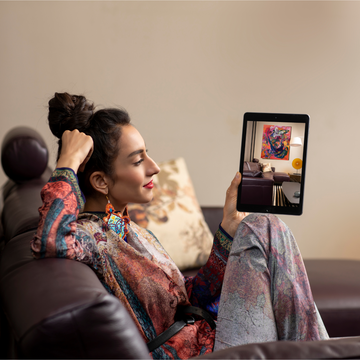Indian Traditional Art Forms
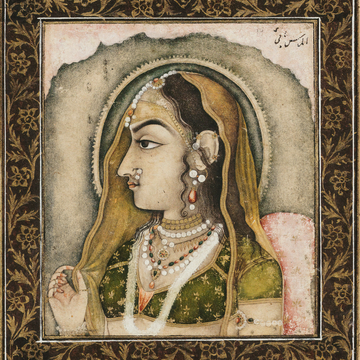
India has a rich and diverse history of art, especially traditional and folk art. Found in various forms such as music, dance, painting, and handicraft, Indian traditional art is passed down from generation to generation and is often practiced by a particular community or sect, in a particular region of the country. Often an art form is preserved and created by a single family or group of extended families in the region. These traditional art forms mainly focus on portraying local stories, and folklore, to the world or imbibing the traditions, customs, and beliefs to the next generation. Traditional paintings are one of the most important forms of all traditional art. Traditionally, Indian paintings were painted on walls, clothes, handmade paper, or handmade canvas, using handmade colour pigments. Even today, most of the traditional artworks are painted using these long-established methods, however, their recent popularity has encouraged many artists to transform these traditional artworks into canvas paintings or to create everyday items out of them.
Picchwai: Tracing back its roots to the temples of Nathdwara, Rajasthan Picchwai paintings portray the stories of Shrinathji — 7-year-old Krishna. The word Picchwai is made by combining two words, picch which means back, and wai which means cloth, hence the word Picchwai means cloth hanging at the back. Traditionally these paintings were hung behind Shrinathji’s idols in temples. Rather than a single artist, several artists paint Picchwai artworks together, in a group. Deeply enriched with various natural colours, Picchwai paintings are very intricate and concealed with traditional symbolism and artistic motifs.

Patachitra: Originating in the eastern states of Odisha and West Bengal, Pattachitra is a traditional yet vibrant art form that depicts the stories of Lord Jagannath and His siblings; Balabhadra and Subhadara, along with other retellings of ancient Indian epics. The word Pattachitra is derived from the combination of two words, Patta which means cloth, and chitra which means drawing. Traditionally artists would create their own canvas by layering and sticking cotton sarees with tamarind paste and wood apple gum. Pattachitra artists make their own colour pigments using natural resources, such as sea shells, lamp soot, powdered Hingula, Harital, Khandaneela stones, etc.

Miniature: Developed around 750 CE, Miniature paintings were traditionally painted on Palm leaves. This art form was mostly used to spread the religious teachings of Gautam Buddha. Unlike contemporary paintings that are at least a few feet wide and long, Miniature paintings are only a few centimeters big. Regardless of their small size, artists paint immaculate features, acute expressions, and intricately detailed motifs in these paintings. Miniature paintings are a blend of Islamic, Persian, and Indian elements. Similar to other traditional art forms, Miniature paintings narrate religious folklore and epics.

Kalighat: Originating in the 19th century, in the vicinity of Kalighat Kali Temple in Kolkata, Kalighat painting is a recently discovered painting style. Composed of bold lines and vivid colours, often these paintings have minimal background details and motifs. Traditionally this art form was created to portray the stories of Hindu gods and goddesses. Later, artists started using this art form to paint a picture of everyday life and society. Many artists also used these paintings to upheaval and bring a revolution against the British and to raise awareness against the socio-economic condition of the rich and the poor in society.
Gond: Made with patterns using different arrangements of dots and dashes, the Gond painting is created by one of the largest tribes of Central India. Unlike other traditional artworks, that focus on ancient Indian epics and gods and goddesses, Gond revolves around flora and fauna. Gond paintings are retellings of some of the popular songs and dances in their community. This art form uses a bright and vibrant colour combination. These colours are derived from natural resources such as plant sap, flowers, leaves, cow dung, charcoal, and coloured soil. The word Gond is derived from the Dravidian expression Kond, which means great green mountains, which is home to many Gond people, living in the mountain range of Madhya Pradesh.

Phad: Phad paintings is a folk art that is practiced in Rajasthan. These are long scroll paintings, drawn on a long piece of cloth or canvas, which is known as Phad. These scrolls narrate the stories of Rajasthani folk deities; Pabuji and Devnarayan. The priest singers also known as Bhopas, carry Phads along with them during their travels and visits to different villages and small towns, to use them as mobile temples or props for their storytelling. Typically, Phads of Pabuji are about 15 feet long and those of Devanarayan are about 30 feet long. The colour pigments used to paint this art form are usually derived from vegetables.



